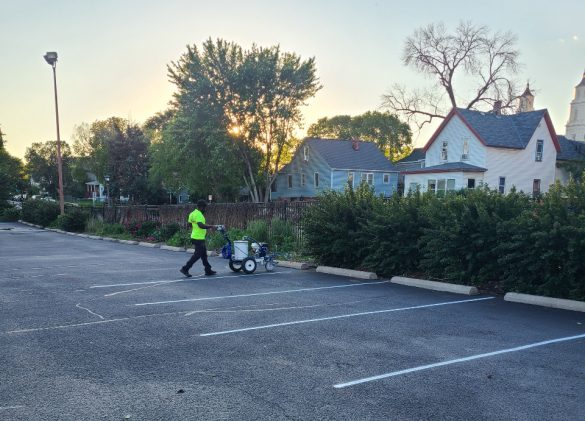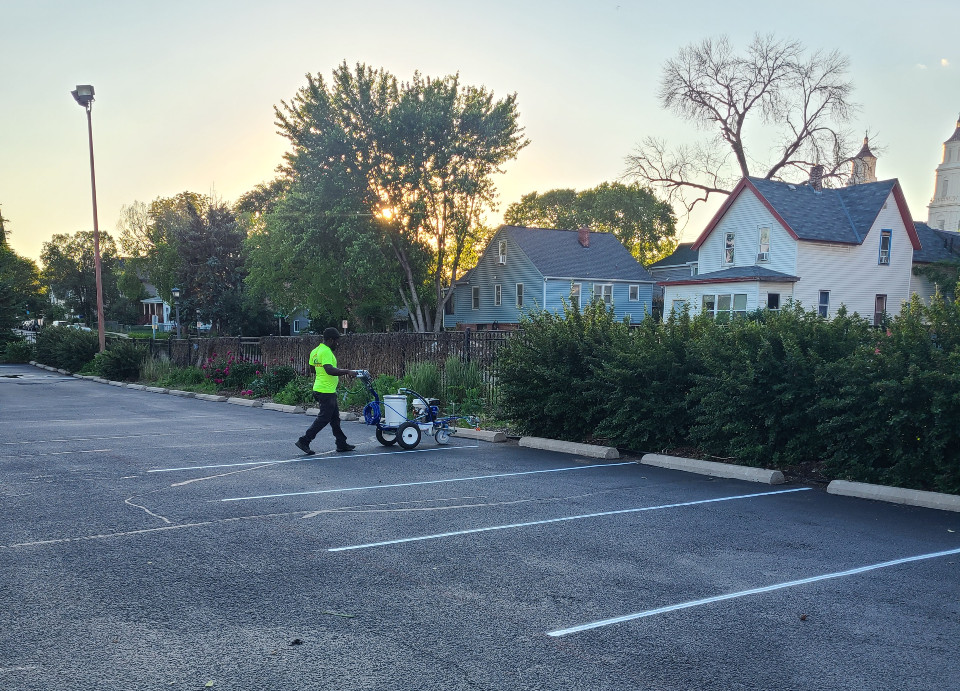 When constructing a commercial parking lot, you must adhere to a set of local ordinances and building codes. You can ensure that your parking lot meets these standards by determining in advance what type of traffic is anticipated and how large the parking lot must be. When constructing a commercial parking lot, you should ensure that it is as functional as possible and in full compliance with all local codes and regulations. This is how you can achieve both of those objectives.
When constructing a commercial parking lot, you must adhere to a set of local ordinances and building codes. You can ensure that your parking lot meets these standards by determining in advance what type of traffic is anticipated and how large the parking lot must be. When constructing a commercial parking lot, you should ensure that it is as functional as possible and in full compliance with all local codes and regulations. This is how you can achieve both of those objectives.
Drainage
All commercial parking lots must be able to drain a certain amount of water per hour, as they must be able to withstand a maximum amount of precipitation when it occurs. If your parking lot lacks adequate drainage, it may become flooded or contribute to flooding on neighboring properties, neither of which are desirable. The parking lot should have a 2 percent slope in the direction of the nearest storm drain or other drainage outlet when asphalt and concrete are used. Using a permeable product that allows water to drain directly through the surface is a second way to ensure that your commercial parking lot can handle drainage properly.
Storm water detention
In addition to properly draining the entire parking lot, a storm water detention area must be constructed within the parking lot. In the case of concrete and asphalt parking lots, this necessitates the designation of a portion of the parking lot as a storm water detention area, which necessitates the sacrifice of a certain number of parking spaces.
Strength
All commercial parking lots must meet certain strength requirements; therefore, you will need to anticipate the type of traffic that will use your lot. If commercial vehicles will be using your parking lot, asphalt may not be able to withstand the heavy loads. Concrete is capable of handling heavy commercial traffic on your parking lot, but it will be significantly more expensive to use as your paving material.
Striping
Striping is an essential element of your commercial parking lot, as it clearly delineates parking spaces, allowing for greater space utilization. With increased parking capacity, your lot will be able to accommodate significantly more traffic. Whether you use asphalt or concrete, a clear striping process must be painted on the surface, and this painting may need to be redone periodically to maintain the visibility of parking space lines.
Maintenance requirements
To comply with all local ordinances and codes, you need only adhere to these requirements to the letter of the law. Nevertheless, given that your commercial parking lot represents a substantial investment, you should probably do your best to perform routine maintenance on it to ensure that it is always functional and aesthetically pleasing. It is possible that cracks will appear in the pavement or that the lines will begin to fade over time.
Whenever any of these occurrences occur, it will be in your best interest to perform any necessary maintenance. In the case of an asphalt commercial parking lot, it may be necessary to apply a sealcoat and repair any cracks that have appeared. If the parking lot was originally paved with concrete, it may be necessary to fill in cracks or even replace some sections in order to maintain their functionality and extend their service life.
Even with the best asphalt, commercial paving projects do not last forever; maintenance is required. As soon as the paving contractor finishes laying the asphalt, the inevitable process of deterioration begins.
The top five indicators that your parking lot requires upkeep are:
Cracks – All commercial paving deterioration begins with cracks. Cracks in asphalt are primarily caused by environmental factors, such as exposure to the sun, moisture, and ground movement. Once a crack develops, moisture invades and exacerbates the problem by freezing and thawing.
Oil Spots – Oil spots cause your asphalt to “unbind” as a result of its reaction with the combined materials that give asphalt its strength. A sealant for asphalt will protect your parking lot from oil leaks from parked vehicles.
Raveling – This occurs when stones emerge from the asphalt surface, giving your parking lot’s surface a very rough texture. If the deterioration is minor, an asphalt sealant will help stop it. In severe situations, a commercial paving overlay may be required beforehand.
Grass Growth – Grass can grow through the cracks in your parking lot and cause significant damage to your asphalt. Before a parking lot can be coated or its cracks filled, the grass must be removed.
Base issues – Standing puddles on your parking lot are typically an indication of a base issue. Water is the greatest enemy of asphalt, and standing water will eventually destroy asphalt where it is present.
We have successfully completed numerous paving projects, including those for businesses and universities, at Ideal Sealcoating is an integral part of modern life, but a parking lot that is cracked or riddled with potholes is neither aesthetically pleasing, functional, nor safe for those driving and walking on it. Without the assistance of an asphalt paving contractor, a parking lot that is deteriorating will continue to look and become worse.
Reliable Paving Contractors for Parking Lot Maintenance
Our team at Ideal Sealcoating has installed, maintained, and repaired commercial paving for a variety of property types. We can inspect your parking lot and perform any necessary maintenance to improve its functionality and appearance.
Our professional team of paving contractors will evaluate the condition of your parking lot and determine the necessary repairs. Contact us today and we will provide you with a free estimate for commercial paving.

